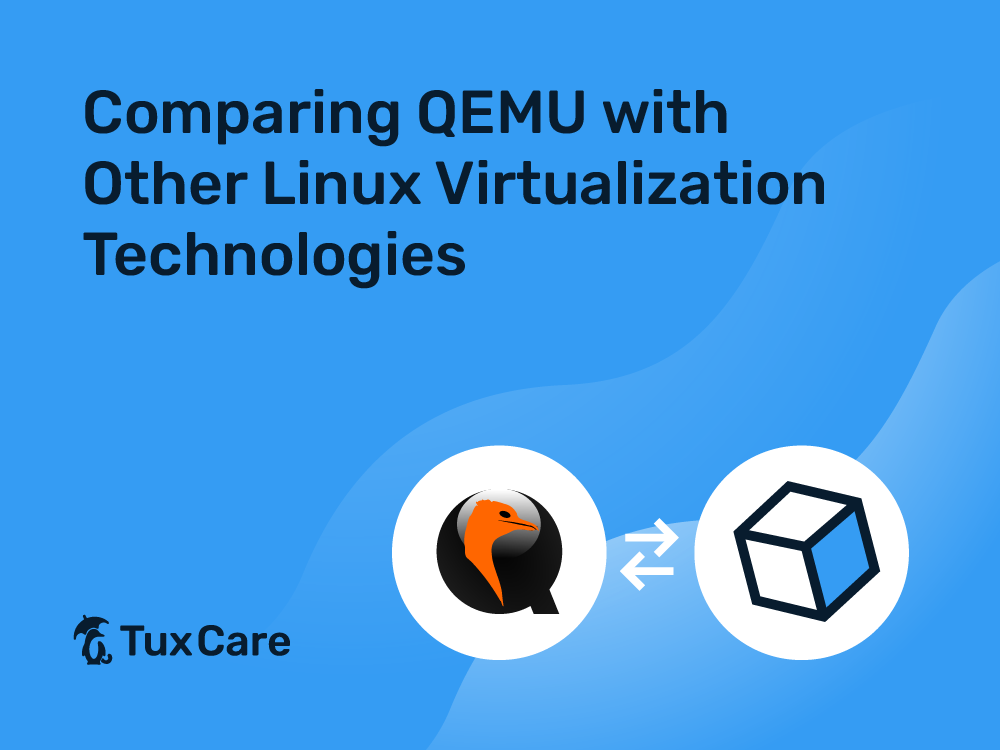Comparing QEMU with Other Linux Virtualization Technologies
- QEMU stands out for its ability to emulate various CPU architectures, making it an essential tool for developers and testers.
- While QEMU operates on software-based emulation, which may be slower than hardware-assisted virtualization, pairing it with KVM can achieve near-native speeds.
- QEMU’s user-friendly graphical interface makes it accessible to a broad range of users, from experts to novices in virtualization technologies.
- As an open-source platform, QEMU offers a cost-effective solution compared to commercial options, although it may lack some advanced enterprise-grade features.
Virtualization technology has become a cornerstone in optimizing IT infrastructure. Whether in the realm of corporate data centers, cloud computing, or personal computing, it offers unparalleled flexibility and efficiency. When it comes to virtualization, users of Linux systems have many choices. Among them, Quick Emulator (QEMU) stands out for its distinctive approach to virtualization. Let’s explore how QEMU compares to other popular Linux virtualization technologies, examining its benefits and disadvantages.
The Emulation Advantage
QEMU’s primary strength lies in its ability to emulate different CPU architectures. This feature is crucial for developers and testers who work across various platforms. It allows the running of software on platforms such as ARM, PowerPC, and SPARC without the corresponding physical hardware.
For developers, this capability translates into a significant reduction in development time and resources, as it eliminates the need for multiple testing environments.
Performance Dynamics
Performance-wise, QEMU operates entirely on software-based emulation, which can be slower compared to hardware-assisted virtualization technologies. However, this performance gap is significantly bridged when QEMU is used in conjunction with KVM. By leveraging hardware extensions like Intel VT-x, QEMU – in tandem with KVM – can achieve near-native speed, a critical factor for resource-intensive tasks.
User Experience and Setup
In terms of user experience, QEMU is often lauded for its user-friendly nature, particularly when it comes to managing virtual machines through its graphical user interface.
This aspect makes it accessible to a broader range of users, including those who might not be as familiar with the intricacies of virtualization technologies. Despite this, the initial setup and ongoing management of QEMU can pose challenges, especially for those not accustomed to command-line operations.
The Open-Source Model
As an open-source platform, QEMU offers a cost-effective virtualization solution. This is particularly appealing in a market where many robust virtualization solutions, such as VMware, come with significant licensing costs. However, it’s worth noting that while QEMU is free, it might lack some of the advanced, enterprise-grade features found in commercial solutions.
Community and Documentation
The vibrant community surrounding QEMU plays a vital role in its development and troubleshooting. Regular updates and community support ensure that QEMU remains relevant in the fast-paced world of technology. However, the comprehensiveness and approachability of documentation can be a mixed bag, particularly for newcomers to the field.
Disruption-Free Patching
Patching hypervisors usually requires a reboot or migrating virtual machines to another running hypervisor. This may cause unwanted service disruptions. In environments where uptime is critical, QEMU can offer a significant advantage through live patching – a vulnerability patching approach that applies patches without disruptions or downtime.
QEMUCare from TuxCare is a live patching solution that boosts QEMU benefits by enabling the application of important updates to a running hypervisor without needing to reboot or migrate your virtual machines.
Niche Applications
Where QEMU truly shines is in environments where testing across different hardware and software configurations is essential. Its emulation capabilities make it an ideal choice for development environments, software testing, and educational purposes, where understanding and working with multiple architectures is vital.
Comparative Analysis
Understanding QEMU’s place in the broader context of Linux virtualization technologies is crucial for those navigating this field.
While KVM offers a more integrated and potentially higher-performance solution, particularly for Linux environments, and VMware provides a robust, enterprise-level platform, QEMU’s niche lies in its unparalleled emulation capabilities. Xen, on the other hand, offers a powerful solution for complex infrastructures – particularly in hybrid cloud environments.
The Future of QEMU
Looking forward, QEMU’s role in Linux virtualization seems set to grow, especially in scenarios requiring extensive emulation capabilities. While it may not be the primary choice for every virtualization need, particularly in high-performance enterprise settings, its unique strengths in cross-platform compatibility and software development underscore its importance in the Linux virtualization toolkit.



 Documentation
Documentation Login
Login




